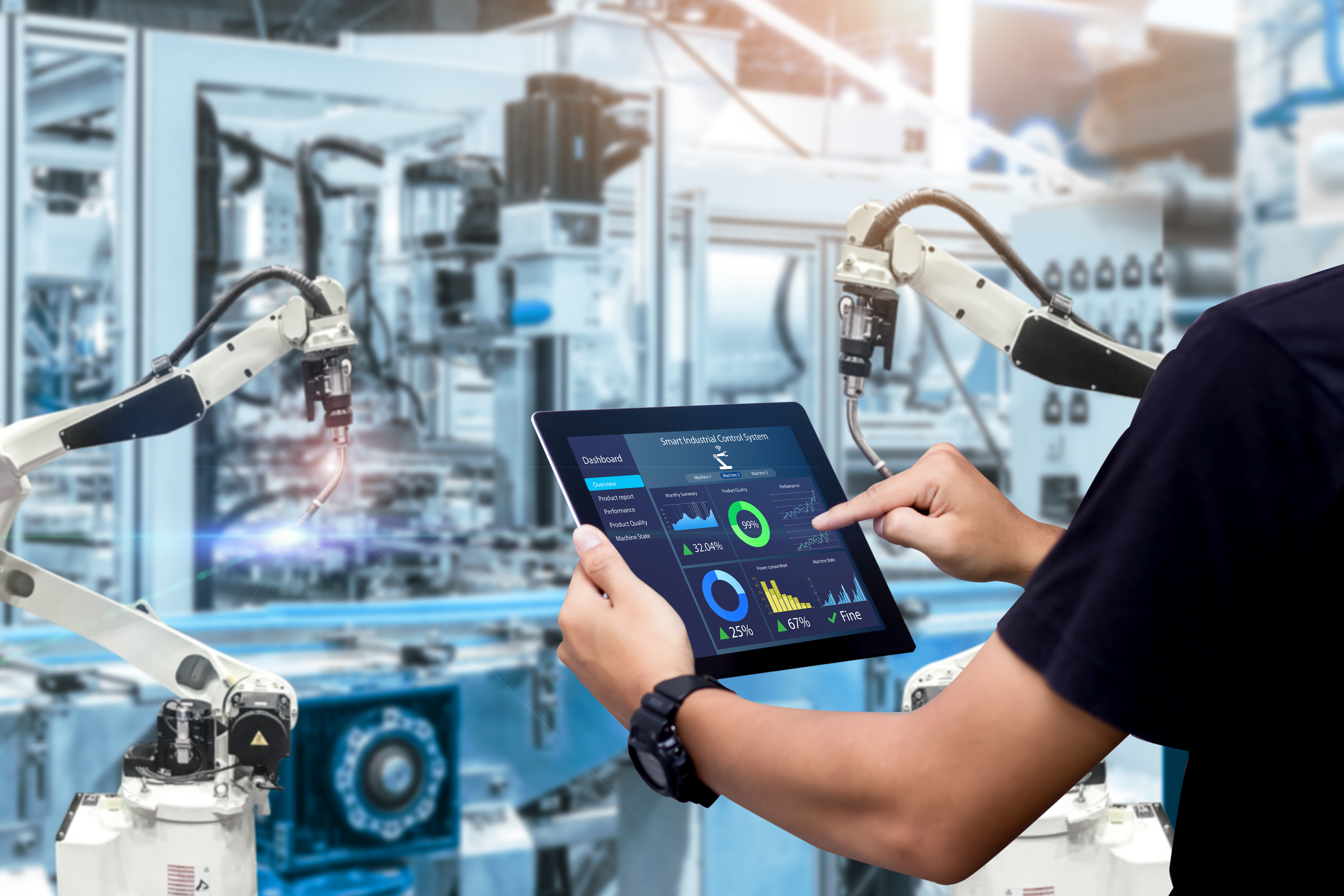June 25, 2023
6 min read
Implementing a Control Tower: Four Phases for Seamless Integration

Introduction:
In today's competitive business landscape, organizations strive to optimize their supply chain operations. One approach gaining popularity is the implementation of a control tower, which acts as a centralized hub for real-time visibility, analytics, and coordination across the supply chain. This article delves into the four essential phases for implementing a control tower successfully, enabling organizations to make proactive decisions, optimize resources, and enhance customer satisfaction.
Manufacturing facilities employ manufacturing execution systems (MES) extensively to organize and monitor daily output. Every manufacturing plant frequently has its own instance of the MES, which prohibits organizations from having a comprehensive understanding of all lines and facilities. Finding the perfect balance between the capacity that is available, supply, and production demand becomes quite challenging as a result.
What if you could compile all the information from these uniquely created systems and provide key production stakeholders with data that would help them optimize their operations? If machine operators, production managers, and plant managers are aware of what will be produced, when it will be produced, and how it will be produced, they can all make better decisions.
Procurement and manufacturing control tower
Strong and efficient multi-enterprise coordination is essential for procurement leaders. But without a procurement control tower, it is almost impossible to coordinate the actions, information, and performance of all stakeholders.
A primary nerve center for procurement is the Procurement Control Tower. The solution's goal is to connect data, purchasing systems, and diverse businesses in a secure, cloud-native environment. Organization executives can increase analysis and scenario planning for improved overall financial and business performance by making more informed decisions about the supply chain.
The Procurement Control Tower doesn't replace any existing purchasing execution software, which keeps your procurement process mostly intact. Instead, it streamlines the pre-purchase planning process to enhance existing tools.
Without outdated, error-prone, difficult-to-use, or spreadsheets with restricted visibility, the procurement control tower combines internal and external data. Current systems can operate more effectively if siloed systems and data are centralized. In order to save procurement teams from having to manually manage email status updates, it is also possible to automate the data collection and analysis process.
The Manufacturing Control Tower (MCT)
An organization's manufacturing lines, tools, and facilities are all covered by a manufacturing control tower (MCT), which collects both structured and unstructured data. It makes it easier to create virtual dashboards that offer important details on the performance and status of manufacturing processes, as well as their dependence on suppliers of raw materials or intermediates, which in turn has an impact on order fulfillment, logistics, and transportation. Decision makers have an aggregated perspective into the manufacturing process performance at any level of the organization by compiling data from heterogeneous systems and viewing it in a single "pane of glass."
MATIX as a Control Tower
In this landscape, MATIX is a hybrid Control Tower that can help you fully monitor both parts of the manufacturing process. It is a procurement control tower because, since it works with NB-IoT or LTE-M cellular connectivity, it allows you to track your outsourced production through total cycles monitoring. It is also an MCT because thanks to the new Matix Maintenance book, it allows to plan and track all the maintenance operations performed on industrial molds and presses.
The 4 Phases
A production control tower consists of multiple technological components and can be complex to build and integrate, so how do you create it?
Phase 1: Identifying and Prioritizing Business Objectives
To begin the control tower implementation process, it is vital to identify and prioritize the business objectives it will support. Close collaboration between key stakeholders, such as supply chain managers, executives, and IT experts, is crucial. Aligning the control tower's objectives with the organization's overall strategic goals is essential. Common objectives may include improving on-time delivery, reducing inventory holding costs, enhancing agility, and increasing supply chain efficiency. By prioritizing objectives, organizations can focus their efforts and resources on areas with the most significant impact.
Phase 2: Analyzing, Detecting, and Developing Response Strategies
The next phase involves analyzing existing supply chain processes, identifying gaps, and developing response strategies. Comprehensive data collection and analysis are necessary to gain insights into the current state of the supply chain. Advanced analytics and data visualization tools are invaluable for detecting patterns, trends, and bottlenecks. By understanding the root causes of inefficiencies or disruptions, organizations can develop effective response strategies. These may include process redesign, supplier collaboration initiatives, demand forecasting improvements, or the implementation of automation technologies. The goal is to create a robust and agile supply chain ecosystem that can adapt quickly to changing market conditions.
Phase 3: Enabling Through Technology, Design, and Deployment
In this phase, organizations focus on enabling the control tower through technology, design, and deployment. Choosing the right technology infrastructure and tools that effectively support the control tower's functionalities is crucial. Investing in advanced supply chain management software, data integration platforms, real-time tracking systems, and predictive analytics tools is essential. These technologies facilitate data capture, integration, and analysis from various sources, providing a holistic view of the supply chain. Additionally, the control tower's design should prioritize user experience, ensuring that relevant stakeholders can access and interpret information easily. Deployment should follow a phased approach, starting with a pilot implementation and gradually scaling up.
Phase 4: Continuous Improvement
The final phase of control tower implementation involves continuous improvement. The control tower is not a one-time project but requires ongoing monitoring, evaluation, and refinement. Establishing key performance indicators (KPIs) to measure the control tower's performance against identified objectives is crucial. Regular performance reviews and feedback loops help identify areas for improvement and fine-tuning. Leveraging advanced analytics, organizations can gain deeper insights into supply chain performance, anticipate future challenges, and identify trends. Continuous improvement initiatives may involve process optimization, data quality enhancements, integration with external partners, or the adoption of emerging technologies. Embracing a culture of continuous improvement enables organizations to continuously enhance their supply chain operations.
Conclusion:
Implementing a control tower is a strategic decision that can significantly enhance supply chain visibility, coordination, and performance. By following the four phases outlined in this article - identifying and prioritizing business objectives, developing response strategies, leveraging technology, and embracing continuous improvement - organizations can successfully integrate a control tower that aligns with their goals and achieves supply chain excellence. With a well-executed control tower implementation, businesses can stay competitive in a rapidly evolving market landscape.

You might also like
MAXIMIZE OEE
Your Tools, Our Technology
Take control of your industrial tools' performance. Our demo will show you how to leverage real-time data, predictive analytics, and comprehensive asset management to minimize downtime and maximize productivity.


“New eyes on your molds production to lead performance towards operational excellence.”

Emanuele Quarin, Digital industrial operations director
.png)

.png)
